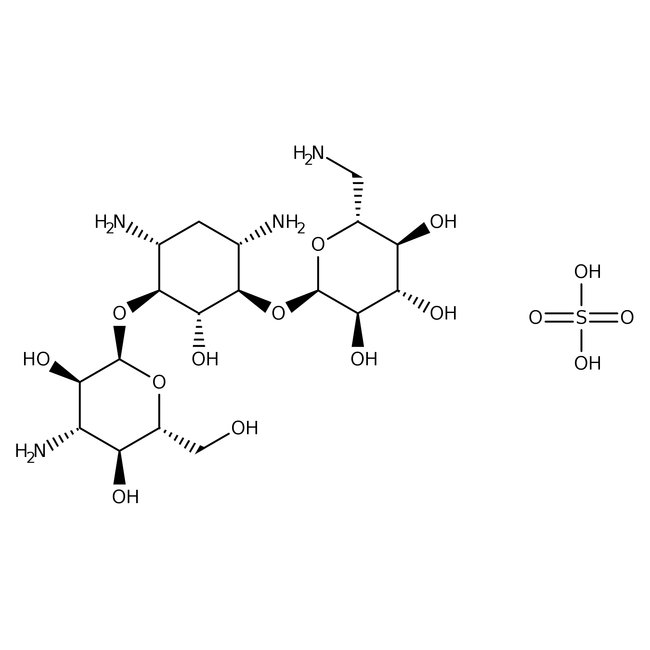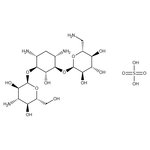Search Thermo Fisher Scientific
Kanamycin monosulfate, Cell Culture Grade
This Thermo Scientific Chemicals brand product was originally part of the Alfa Aesar product portfolio. Some documentation and label information may refer to the legacy brand. The original Alfa Aesar product / item code or SKU reference has not changed as a part of the brand transition to Thermo Scientific Chemicals.
General Description
• Kanamycin monosulfate is the sulfate salt form of kanamycin A
• It was isolated from Streptomyces kanamyceticus
• This compound inhibits translocation during protein biosynthesis. It binds to the 30S ribosomal subunit, causing misreading of the mRNA sequence
Application
• Kanamycin monosulfate shows antibacterial activity. It is effective against gram-positive and gram-negative bacteria, as well as Mycoplasma species
• This compound is also involved in translating prokaryotic ribosomes
• In molecular biology experiments, it is commonly used to select and isolate transformants expressing the kanamycin resistance gene, and plants that have the NPT II (APH3) gene incorporated
Literature References
Patel, K. N.; Limgavkar, R. S.; Raval, H. G.; Patel, K. G.; Gandhi, T. R. High-Performance Liquid Chromatographic Determination of Cefalexin Monohydrate and Kanamycin Monosulfate with Precolumn Derivatization. J. Liq. Chromatogr. Related Technol. 2015, 38 (6), 716-721.
Chi, Z.; Rong, Y. J.; Li, Y.; Tang, M. J.; Chi, Z. M. Biosurfactins production by Bacillus amyloliquefaciens R3 and their antibacterial activity against multi-drug resistant pathogenic E. coli. Bioprocess. Biosyst. Eng. 2015, 38 (5), 853-861.
General References:
- Patel, K. N.; Limgavkar, R. S.; Raval, H. G.; Patel, K. G.; Gandhi, T. R. High-Performance Liquid Chromatographic Determination of Cefalexin Monohydrate and Kanamycin Monosulfate with Precolumn Derivatization. J. Liq. Chromatogr. Related Technol. 2015, 38 (6), 716-721.
- Chi, Z.; Rong, Y. J.; Li, Y.; Tang, M. J.; Chi, Z. M. Biosurfactins production by Bacillus amyloliquefaciens R3 and their antibacterial activity against multi-drug resistant pathogenic E. coli. Bioprocess. Biosyst. Eng. 2015, 38 (5), 853-861.



